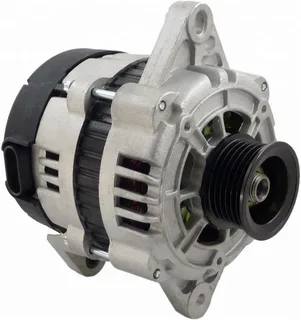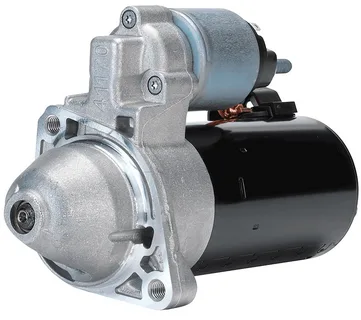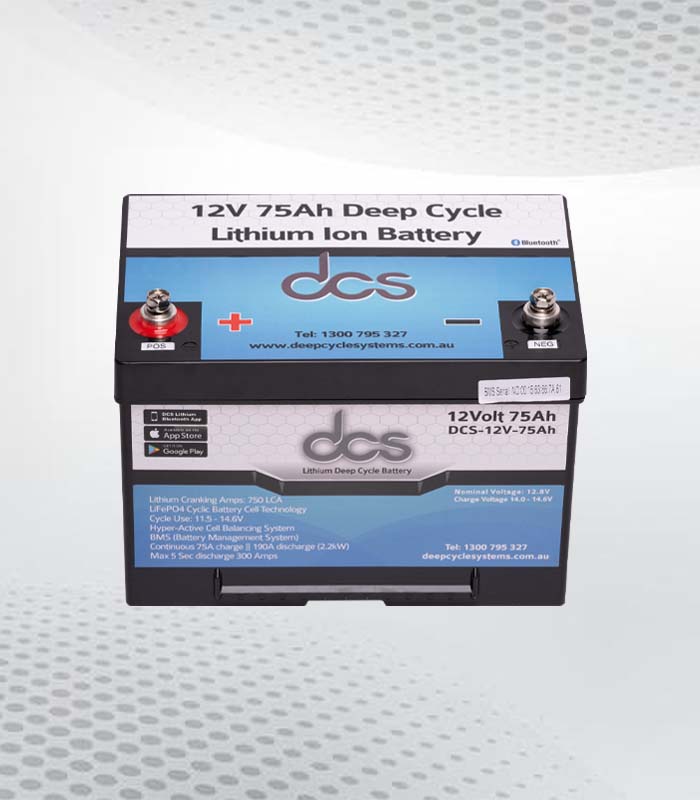In today’s world, where technology permeates every aspect of our lives, having a reliable power source is more important than ever. Whether it’s for running essential appliances during a power cut or optimising energy usage in our homes, the Best Power Inverter can make a significant difference. This blog post will delve into the importance of choosing the right power inverter and how it can enhance your home’s functionality and efficiency.
Understanding What a Power-Inverter Is and How It Works
A power inverter is an essential device that converts direct current (DC) from a battery or solar panel into alternating current (AC), which is the form of electricity commonly used in homes. The inverter takes in low-voltage DC and transforms it into higher voltage AC, enabling you to run household appliances. This conversion process is particularly vital for those who rely on alternative energy sources like solar panels, as it allows for the direct utilisation of renewable energy to power everyday devices.
Moreover, power inverters often include built-in safety mechanisms, such as overload protection and temperature control, ensuring both the device and connected appliances operate securely. By understanding the basic operation of a power inverter, you can make an informed decision when selecting the best model for your home’s needs.
Ensuring Uninterrupted Power Supply during Outages
Power cuts can disrupt our daily routines, halting everything from basic lighting to essential appliances like fridges and heating systems. Having the Best Power-Inverter ensures that you have a reliable backup solution during such times. Unlike traditional generators, power inverters offer a quieter and more environmentally friendly alternative. They seamlessly switch to battery power when the grid goes down, providing uninterrupted electricity to keep your home functional. This instant switchover is particularly beneficial for critical devices like medical equipment, ensuring there is no lapse in operation.
Additionally, inverters can be paired with batteries or solar panels to create a comprehensive backup power system. This setup ensures that your home remains powered not just for minutes, but for hours or even days, depending on the battery capacity and power consumption. With the ability to support a range of devices from lights to essential kitchen appliances, a high-quality inverter can help you maintain a sense of normalcy during power cuts. Many inverters also come with features like automatic restart and low battery alarms, adding an extra layer of convenience and peace of mind.
Enhancing Energy Efficiency and Reducing Utility Costs
Integrating a power inverter into your home can lead to significant improvements in energy efficiency and notable reductions in utility costs. By converting DC electricity generated by solar panels into usable AC power, you can lessen your dependence on the electrical grid. This shift not only reduces your electricity bills but also maximises the return on investment from your renewable energy sources.
Many modern inverters come equipped with smart technology that monitors and optimises energy usage, ensuring that power is consumed more effectively and waste is minimised. This intelligent energy management can further drive down utility expenses while fostering environmentally friendly practices.
Additionally, some inverters offer features like time-of-use optimisation, allowing you to draw power from the grid during off-peak hours when electricity rates are lower and switch to stored energy during peak times. This strategy can further enhance cost savings and improve overall energy efficiency. By harnessing the capabilities of the power inverter, you can achieve a more sustainable and economical home energy system that aligns with modern efficiency standards.
Key Features to Look for in the Power Inverter for Home
When searching for the Power Inverter for home, several features should be at the forefront of your decision-making process. Firstly, consider the inverter’s efficiency rate; a higher efficiency ensures that minimal energy is lost during the conversion from DC to AC. This is crucial for maximising the usability of your stored or generated energy.
Wattage Capacity
Wattage capacity is another essential factor. Your chosen inverter should have enough capacity to handle the total wattage of all the devices you intend to run simultaneously. To ensure safety and longevity, look for inverters equipped with built-in safety mechanisms such as overload protection, temperature control, and short-circuit protection.
Portability
Portability and ease of installation are also important. Some inverters are designed to be compact and lightweight, making them easier to transport and install. A user-friendly interface can significantly simplify the operation, especially for individuals who may not be well-versed in electrical systems.
Automatic Restart
Moreover, modern inverters often come with smart features like automatic restart and low battery alarms, providing added convenience and peace of mind. These features can help you manage your energy consumption more effectively and respond promptly to any issues that may arise. By prioritising these key attributes, you can select an inverter that will best meet your home’s energy needs.
Benefits of Pure Sine Wave Inverters over Modified Sine Wave
When choosing a power inverter, it’s essential to understand the difference between pure sine wave and modified sine wave inverters. Pure sine wave inverters produce a smoother and cleaner output, closely resembling the electricity supplied by utility companies. This consistency is particularly crucial for sensitive electronics, such as computers, televisions, and certain medical devices, which can be damaged or experience performance issues with modified sine wave inverters.
Additionally, pure sine wave inverters provide more efficient power delivery, which can extend the lifespan of your electronics and improve their overall functionality. Household appliances, such as fridges, microwaves, and washing machines, also run more efficiently and quietly with pure sine wave power. This type of inverter reduces electrical noise and interference, ensuring your devices operate without disruptions or reduced efficiency.
Another advantage is that pure sine wave inverters can handle a wider range of loads, from low-power devices to high-demand appliances, making them more versatile for household use. They are also better suited for renewable energy systems, enhancing the performance of solar panels and other alternative energy sources. By investing in a pure sine wave inverter, you ensure optimal performance, longevity, and safety for all your connected devices.
Safety and Reliability Considerations
When it comes to power inverters, safety and reliability are crucial factors that should not be overlooked. High-quality inverters are equipped with various safety features designed to protect both the device and your household appliances. Look for models that include short-circuit protection, which prevents damage in the event of electrical faults, and temperature control, which ensures the inverter operates within safe temperature ranges to avoid overheating.
Surge protection is another essential feature, as it shields your appliances from sudden spikes in voltage that could potentially cause damage. Reliability goes hand in hand with safety, and choosing an inverter from a reputable brand known for its robust performance and durability can offer peace of mind. These inverters are often rigorously tested to meet stringent safety standards, ensuring they perform consistently under different conditions.
Additionally, consider an inverter with a built-in alarm system to alert you to potential issues such as low battery or overload, allowing you to take immediate action. For those relying on critical devices, such as medical equipment, a reliable power inverter can be a lifesaver, providing consistent and dependable power. By prioritising these safety and reliability features, you can ensure that your power inverter operates smoothly and efficiently, safeguarding both your home and your valuable electronics.
Installation and Maintenance Tips for Longevity
Proper installation and regular maintenance are key to ensuring the longevity of your power inverter. Start by selecting an appropriate location for the inverter, ensuring it is well-ventilated and protected from extreme temperatures and moisture. Mount the inverter securely and follow the manufacturer’s instructions for connecting it to your battery or solar panel system.
For maintenance, perform regular inspections of the inverter and its connections. Check for any signs of wear or corrosion on the cables and terminals, and clean them as needed to ensure optimal conductivity. Make sure the cooling fans are unobstructed and functioning properly, as adequate cooling is essential to prevent overheating. Additionally, it’s advisable to periodically update the firmware if your inverter supports it, as manufacturers often release updates to improve performance and add new features. Keep an eye on the inverter’s display or indicator lights for any error messages or alerts, and address these promptly to avoid potential issues.
For inverters integrated with battery systems, regularly check the battery’s health and replace it if its performance declines. Following these installation and maintenance tips can help you maximise the lifespan and efficiency of your power inverter, ensuring it remains a reliable component of your home energy system.
Environmental Benefits of Using the Inverter for Home
Choosing the Inverter for home offers substantial environmental benefits, particularly when integrated with renewable energy sources like solar panels. By converting solar-generated DC power into usable AC electricity, inverters make it possible to power your home using clean, sustainable energy. This reduces reliance on fossil fuels and decreases greenhouse gas emissions, contributing to a lower carbon footprint.
Modern power inverters are designed with energy efficiency in mind, minimising energy loss during the conversion process. This ensures that the maximum amount of harvested solar energy is utilised, reducing the need for supplementary power from the grid. Some advanced models even feature intelligent energy management systems that optimise power usage, further enhancing their environmental impact. In addition to benefiting the environment, using an efficient power inverter can lead to significant savings on energy bills, making renewable energy more accessible and financially viable for homeowners.
The reduction in utility costs, combined with decreased environmental impact, makes a compelling case for integrating the power inverter into your home energy system. Moreover, widespread adoption of power inverters and renewable energy sources can have a collective positive impact, encouraging a shift towards greener energy solutions at a community and even national level. By choosing an efficient inverter, you are not only investing in your home’s energy independence but also contributing to broader environmental sustainability efforts.
Conclusion
Investing in the Best Power Inverter is a strategic move towards enhancing your home’s energy efficiency, reliability, and sustainability. From ensuring uninterrupted power supply during power cuts to optimising the usage of renewable energy sources, a high-quality inverter offers a multitude of benefits. Features such as pure sine wave output, smart energy management, and built-in safety mechanisms make modern inverters an indispensable part of a contemporary home energy system. Additionally, the environmental advantages of reducing dependency on fossil fuels and minimising energy waste cannot be overstated.
FAQs
1. How do I know what size inverter I need?
To determine the appropriate inverter size, calculate the total wattage of all the devices you plan to run simultaneously. The inverter’s output capacity should exceed this combined wattage to ensure smooth operation without overloading.
2. Can I use Power Inverter for Home for all my household appliances?
Whilst most household appliances can be powered by Power Inverter for Home, sensitive electronics, such as computers and medical equipment, may require a pure sine wave inverter for optimal performance and safety.
3. How long will a power inverter last?
A high-quality inverter can last between 5 to 10 years or more with proper care and maintenance. Regular inspections and timely updates can extend its lifespan.




